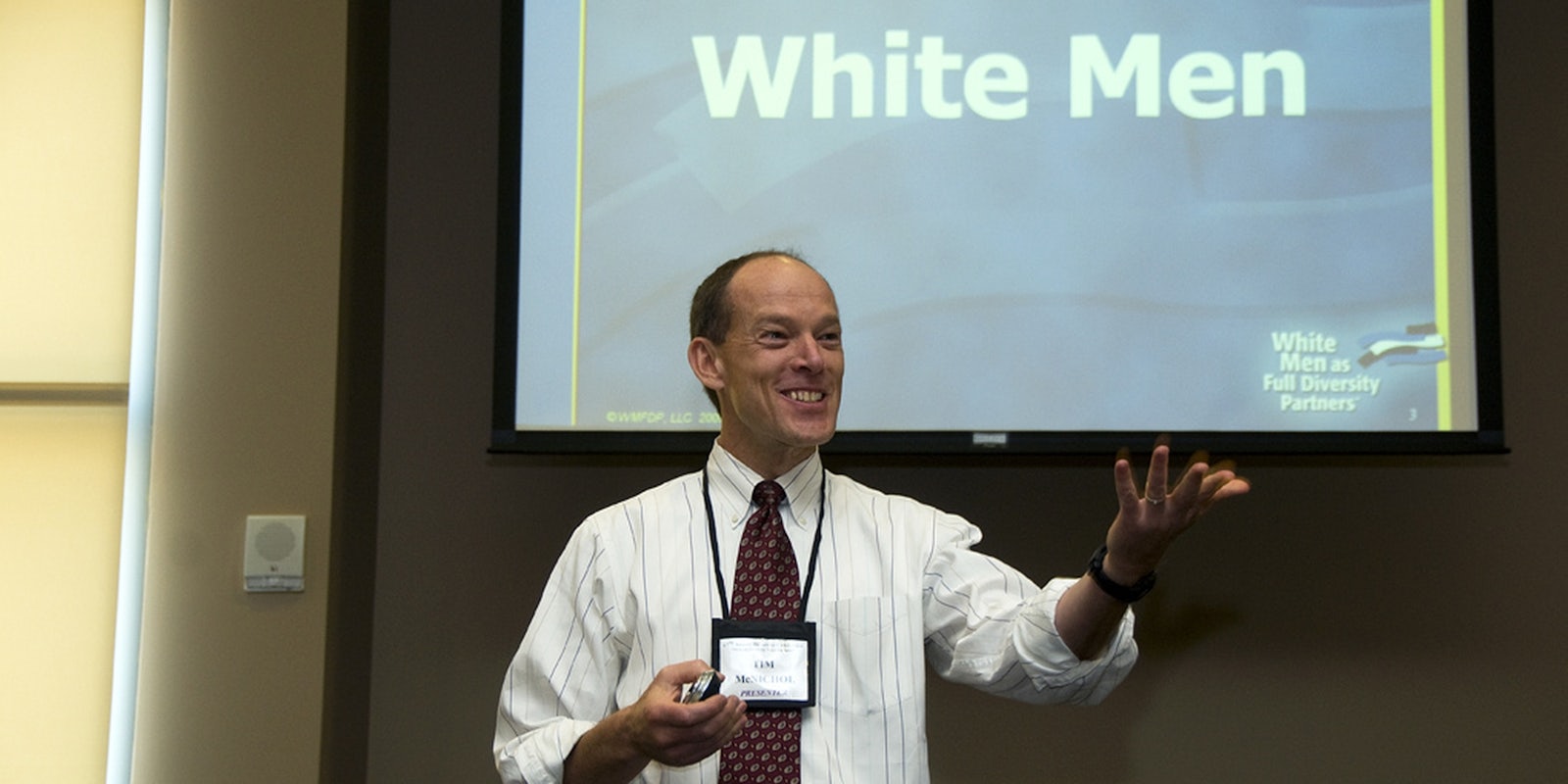Technology firms say they want to improve diversity within their companies. Giants like Google and Facebook have promised to change the way their workforces look. But is all that million-dollar talk getting them any closer to attracting and retaining minority talent?
There is limited discussion surrounding how, exactly, diversity is gaining traction in Silicon Valley. In fact, recent data from Facebook doesn’t look good—in 2013, Facebook hired just seven black people out of 1,231 new hires. Facebook is 68 percent male globally, and 91 percent white or Asian stateside.
To change the way people talk and think about hiring diverse employees and fostering an inclusive culture beyond blind resumes and adding minorities to hiring committees, former Google and current Slack engineer Erica Baker started the hashtag #RealDiversityNumbers.
The hashtag accompanies questions companies should be asking themselves, and highlights issues like “culture fit,” age, socioeconomic backgrounds of employees and recruits, and talent retention—all issues that are often ignored while firms blame the pipeline for lack of talent, and use vague language to describe diversity in their organizations.
https://twitter.com/EricaJoy/status/623367054138040320
https://twitter.com/EricaJoy/status/623369172836167682
#RealDiversityNumbers
— Megan Ben Dor Ruthven (@_mbdr_) July 21, 2015
How many minorities in tech experiences have you read within the last month?
https://twitter.com/MsFionaTay/status/623374838422458368
Does your company financially burden people with disabilities via health insurance “discounts” they can’t get? #RealDiversityNumbers
— Mx. Amadi Lovelace Has Left This Place (@amaditalks) July 21, 2015
https://twitter.com/ShellyBacksass/status/623577257458569216
https://twitter.com/litui/status/623541710618935296
How many of your developers received free school lunches or lived in Sec. 8/public housing as children? #RealDiversityNumbers
— M. Archer (@mejarc) July 21, 2015
How many marginalized people have left your company because they didn’t feel they were being respected?#RealDiversityNumbers
— Damien McKenna (@DamienMcKenna) July 21, 2015
#RealDiversityNumbers What’s your office’s median age? What is your office’s age range? What’s your office’s age distribution?
— jennz0r (@mybluewristband) July 21, 2015
As Silicon Valley and tech companies across the U.S. continue to tout the importance of improving the number of women and people of color within their companies, they also must realize it’s not just an issue that can be solved by throwing money at a problem, or simply recruiting talent from diverse groups out of college or within the tech community.
The #RealDiversityNumbers hashtag demonstrates the nuance required to actually make changes within a company. It requires transparency beyond the annual release of diversity statistics. When companies begin to ask these questions and provide answers to both themselves and potential employees, it creates a valuable dialogue that can help organizations foster and maintain diverse workplaces, and hold them accountable for fulfilling diversity goals that can’t necessarily be quantified in a chart.
But no company is answering them, yet.
Photo via OregonDOT/Flickr (CC BY 2.0)


